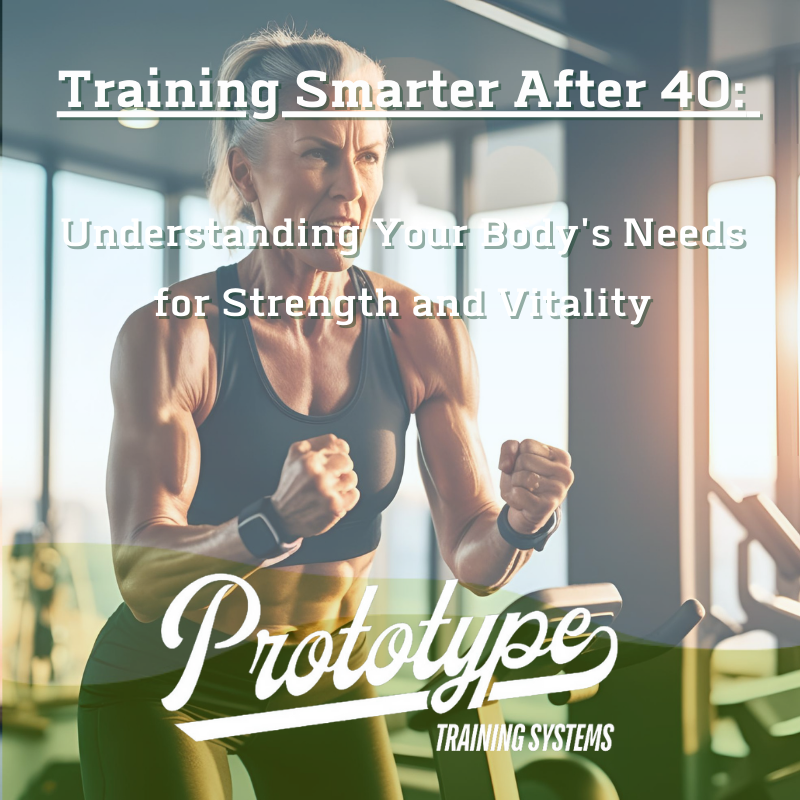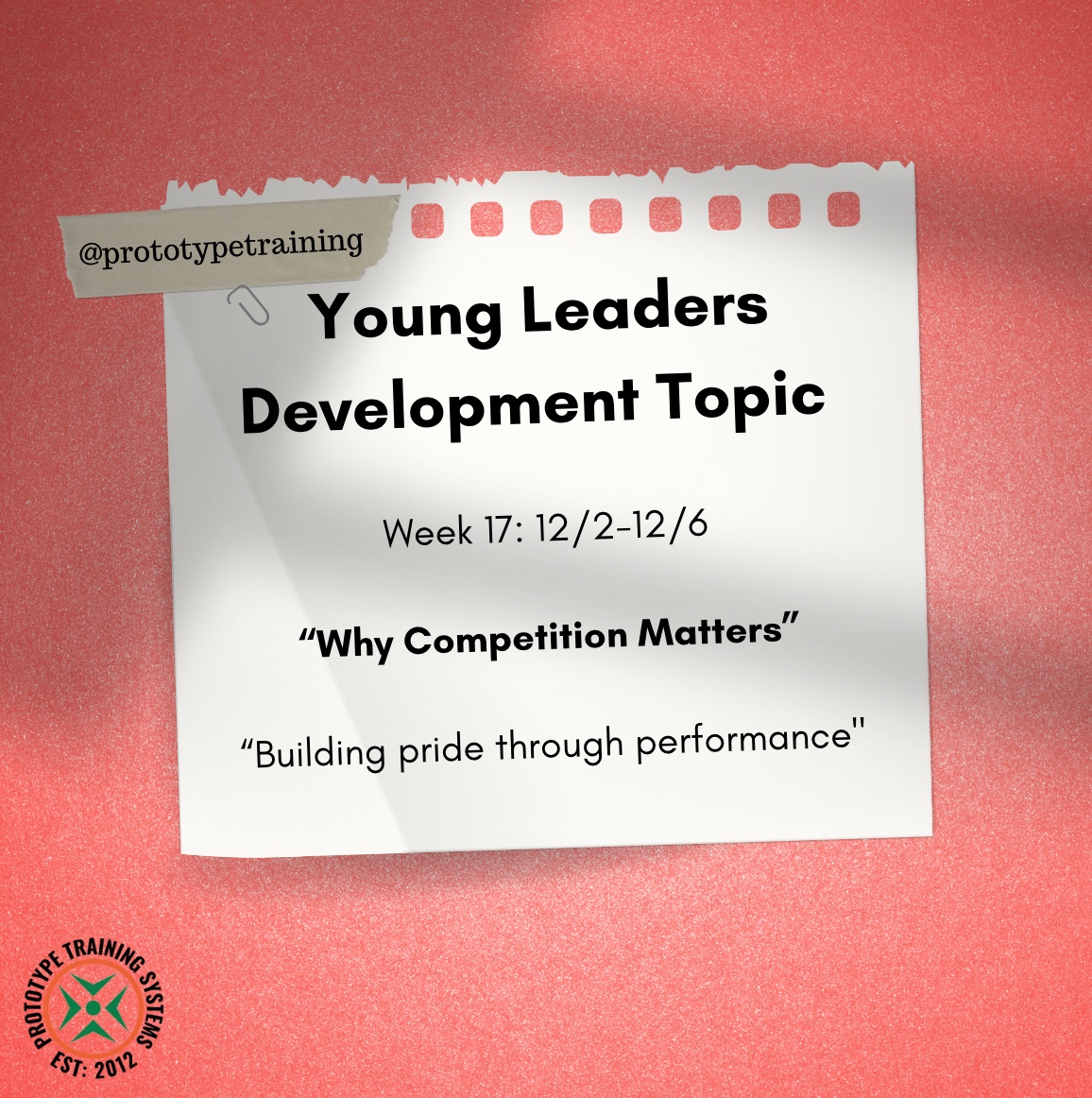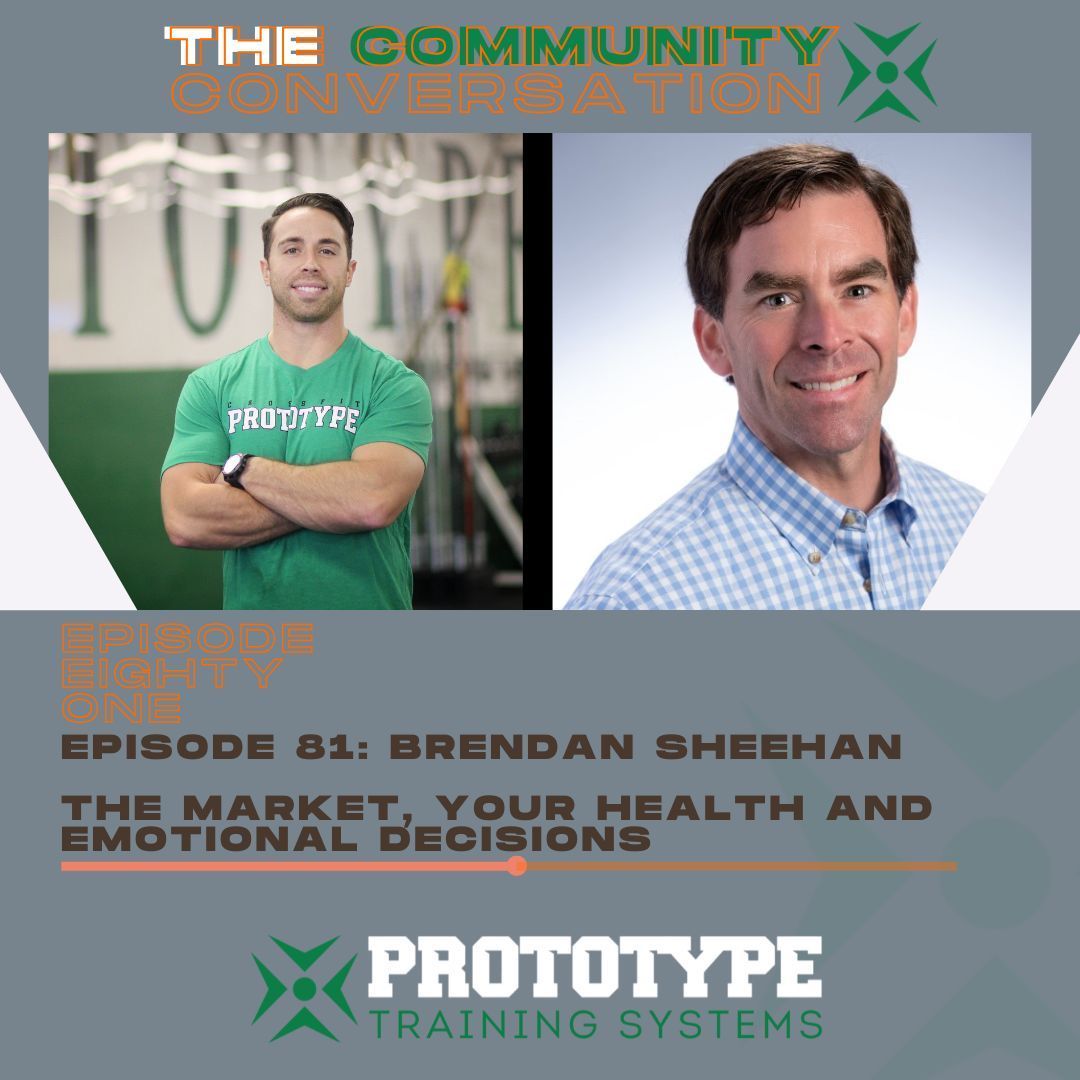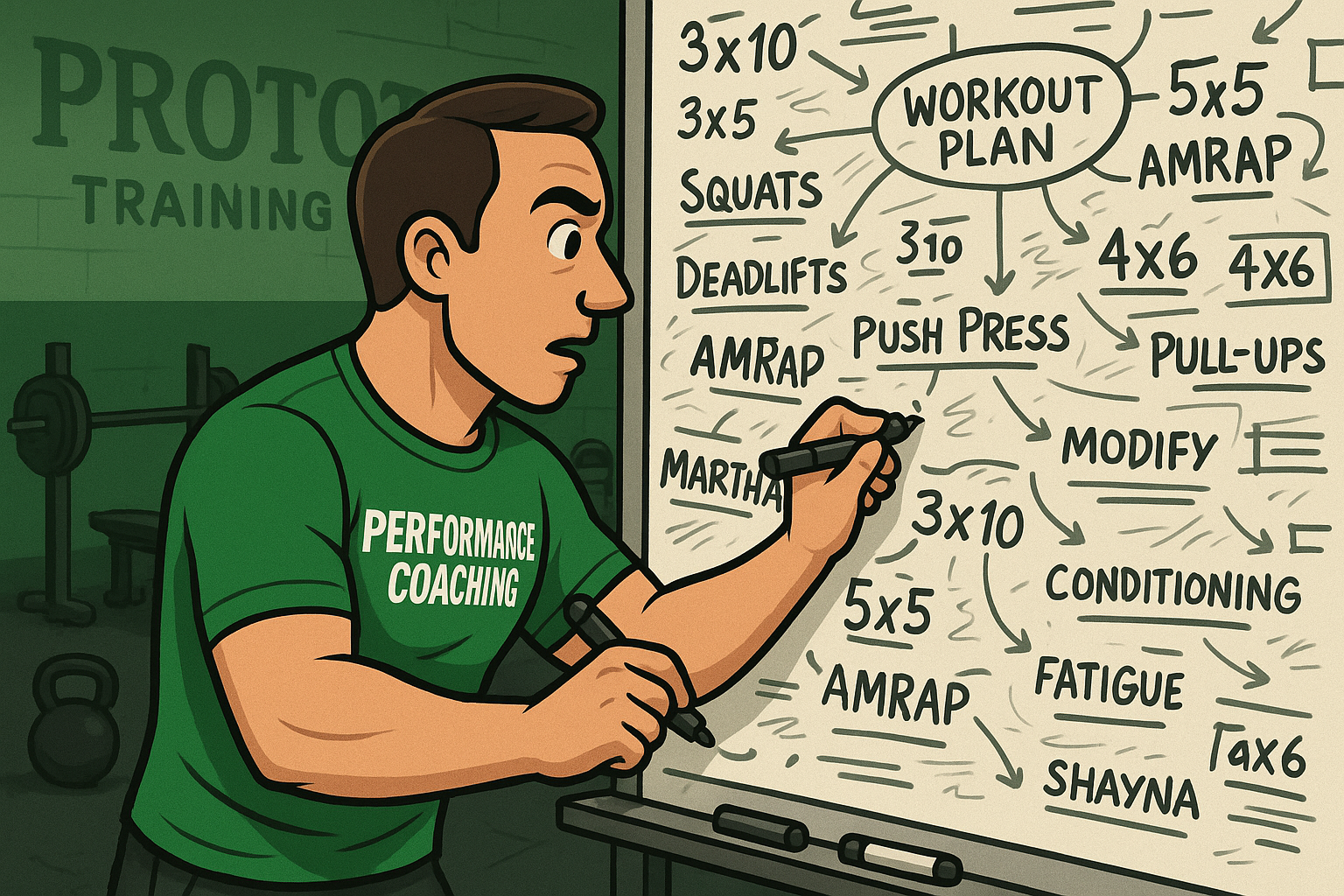Women Training Smarter After 40: Understanding Your Body's Needs for Strength and Vitality
Mike Collette • April 3, 2025
Training Smarter After 40 For Women: MUST READ

At Prototype Training, we've trained, coached and worked with folks from all ages. After close to 20 years in the Health and Fitness Industry, i've been fortunate to coach folks on an individual and group level, and in doing so have had to learn myself to adapt to specific client goals, personalities and where people are at in their life.
While I'm not a woman (I wanted to point that out!), I did want to share what I've learned and more recent information that I think can be helpful as this has been a recurring topic that has been brought up. This blog post specifically sheds some light on some things to think about in terms of training differences in men vs. women, changes you may experience, and some actionable insights.
With that said, hitting your 40s and 50s often brings incredible wisdom and confidence, but i've seen first hand with those that we work with, it can also come with noticeable shifts in how your body feels and responds to exercise. Maybe you've noticed changes in energy levels, find it harder to maintain muscle tone, see differences in body composition, or feel like workouts that used to work wonders just aren't delivering the same results?
If you're experiencing this, you're not alone. It's often about understanding the significant physiological changes happening during this life stage and adapting your approach.
Insights from experts like Dr. Stacy Sims, a leading exercise physiologist and nutrition scientist specializing in female athletes, are bringing these differences to light – as highlighted in informative discussions like her recent appearance on the Mel Robbins Podcast (Listen Here: "The Body Reset: How Women Should Eat & Exercise...").
Dr. Sims emphasizes that understanding our unique female physiology is key to optimizing health and fitness, especially during and after the menopausal transition.
The Power of Hormones: Why Things Change
One of the biggest drivers of change for women in their 40s and 50s is the natural fluctuation and eventual decline of estrogen. This hormonal shift significantly influences:
- Muscle Health: Potentially making it harder to build and maintain lean muscle mass.
- Bone Density: Contributing to a faster rate of bone loss.
- Metabolism & Fat Storage: Altering energy use and fat distribution.
- Stress Response & Recovery: Affecting how we handle exercise stress.
Based on Dr. Sims' work and the broader scientific understanding of female physiology during this life stage, here are key areas to focus on:
1.) Fuel Wisely, Especially Before Training:
As Dr. Sims often points out, fasted training can be counterproductive for many women 40+.
Exercising without adequate fuel can elevate the stress hormone cortisol, potentially signaling the body to store fat. Prioritizing fuel (protein/carbs) before workouts supports muscle maintenance and provides energy. Ensuring adequate protein intake throughout the day is also crucial for muscle protein synthesis, a cornerstone of maintaining lean mass as we age [Concept supported by research on energy availability and hormonal responses to exercise in women]. SO if you work out in the morning and never thought you could eat before (even if you are a 5am person)... something as simple as half a banana can make a serious difference.
2.) Prioritize Strength Training with Heavier Weights:
This becomes paramount. Lifting challenging weights (e.g., 4-8 quality repetitions) provides the necessary mechanical stimulus to:
- Combat Muscle Loss (Sarcopenia): Essential for maintaining metabolic rate and function.
- Strengthen Bones: Heavy loads signal bones to adapt and strengthen, crucial for mitigating osteoporosis risk [Principle based on mechanotransduction/Wolff's Law; confirmed by numerous meta-analyses showing resistance training benefits postmenopausal bone mineral density]- If you want to find out your bone mineral density, I would recommend a DEXA scan from our friends at Healthspan-Longevity in Westborough. If you're a Prototype member, you will receive a discount!
- Focus on major compound lifts for maximum systemic benefit.
3.) Incorporate High-Intensity Work (Smartly): True high intensity training requires a high degree of effort and often accompanied by discomfort, but pack A TON of metabolic health benefits. An example of this which if you've trained with us you would see are things like short bursts of true high-intensity interval training (HIIT).Think maximal effort for brief periods (e.g., 20-45 seconds).
Dr. Sims emphasizes the critical need for adequate recovery. This allows the nervous system to recover, ensuring the stimulus remains beneficial rather than purely stressful, which is particularly important as hormonal buffers change. So if you find yourself going the same speed regardless of the duration of the activity (maybe jogging when you should be sprinting), this can be a signal to dial up the intensity!
4.) Optimize Recovery Between Sets: When lifting heavy, allow sufficient rest (90 seconds to 2+ minutes) between sets. As coaches, we advise and give these prescriptions in classes or in our training sessions, but we also understand the need for wanting to "get it done". The idea around longer rest especially on strength training sets isn't laziness; it's strategic. It permits better nervous system recovery, allowing for higher quality and intensity on subsequent sets, ultimately leading to better strength adaptations, which is so important for women who are looking to pack on strength.
5.) Consider Creatine Supplementation:
Once mainly associated with male athletes, creatine monohydrate is now recognized for its significant benefits for women 40+ AND it's the most researched supplement ever... yes, ever. Research highlights its role in enhancing strength gains, supporting muscle mass, improving recovery, and potentially offering cognitive benefits during and after menopause [Referenced in reviews like Smith-Ryan AE, et al. Nutrients. 2021]. A typical dose is 3-5 grams daily.
How Prototype Supports Your Journey
- At Prototype Training Systems, we integrate these evidence-based principles:
- Emphasizing Progressive Strength: Tailoring programs around functional strength development.
- Providing Expert Coaching: Guiding you on appropriate loading, intensity, form, and crucial rest periods.
- Fostering a Supportive Environment: Empowering you with knowledge and community support.
Moving Forward with Confidence
Understanding the "why" behind your body's changes empowers you to make informed choices. By prioritizing strength, fueling strategically, incorporating smart intensity, and embracing recovery – as highlighted by experts like Dr. Stacy Sims and supported by scientific research – you can build resilience and vitality through your 40s, 50s, and beyond.
Ready to fine-tune your approach? Talk with one of our coaches. We're here to help you create a sustainable plan that works for you.
Further Learning:
- Listen to Dr. Stacy Sims on the Mel Robbins Podcast (Ep. 160: "The Body Reset") for an in-depth discussion.
- Explore resources from Dr. Stacy Sims' Official Website (including information on her books like "ROAR" and "Next Level").
- For scientific details, search academic databases like PubMed for topics such as:
- resistance training bone density postmenopausal women
- creatine supplementation women health
- female athlete triad/RED-S energy availability
Previous Blogs

Yesterday was a great reminder of what a little friendly competition can do. We set up a simple 1-v-1 game: kids had to sprint, tap two cones, and race back to knock over a foam roller. Nothing fancy, just movement, focus, and a clear goal. But something cool happened. The second it became head-to-head, the energy shifted. Kids were locked in. They ran harder. They pushed themselves—not because they were told to, but because someone else was giving it their all too. Even the kids watching got invested—shouting encouragement, clapping for effort, reacting to every close finish. That sense of shared experience, of community rooted in challenge, is exactly what youth development should be about. It was a perfect example of how competition, even in its simplest form, can bring out motivation and effort . Not for a prize, but just for the challenge of it. More Than a Game: The Real Value of Friendly Competition In today’s world of participation medals and well-meaning “everyone wins” culture, it’s easy to misunderstand the role of competition. But when designed thoughtfully and guided with intention, competition doesn’t diminish self-worth—it enhances it. According to a 2019 study published in Frontiers in Psychology, structured competition can lead to higher intrinsic motivation, improved self-esteem, and a greater sense of personal accomplishment in youth participants (Bonfiglio et al., 2019). When kids compete, they learn that effort yields results. They learn how to win graciously—and perhaps more importantly—how to lose with resilience. They discover the value of hard work, discipline, and focus. They get to ask: “How fast can I be?” “How far can I push myself?” And, “What happens if I try just a little harder?” The Pride in Performance There’s a moment—right after a child finishes a race, or a round of a competitive game—where they catch their breath, stand a little taller, and smile. Whether they won or not is almost secondary. What matters is that they showed up and gave their best effort. That sense of pride? That’s not vanity. It’s the birth of confidence. And when that confidence is built through movement, through play, through sweating and trying and doing—it sticks. Not just in sport, but in school, at home, in friendships, and beyond. Final Thoughts Competition, when framed the right way, helps kids build confidence, stay motivated, and take pride in their effort. It’s not about winning — it’s about showing up, trying hard, and learning what they’re capable of. At its best, competition doesn’t separate kids — it brings them together, showing them how to push themselves while supporting each other along the way.

It’s no secret — we’re living in a world that feels increasingly volatile. Financial markets are unpredictable. The news cycle is overwhelming, social media noise is constant and it's harder and harder to sort through what's real and what's not. And when uncertainty rises, it's human nature for people to start making emotional decisions. Being in the fitness industry for close to 20 years and operating Prototype Training Systems since 2012, I've seen this happen time and time again — not just in the stock market — but in our gym community. When we feel stressed financially (and trust me, i've been there as an entrepreneur), one of the first things they often cut is their investment in their health. Cancelling the gym. Skipping workouts. Pressing pause on coaching or training. We can go into a frenzy of what needs to be prioritized and what doesn't, and often it's rooted in anxiety and fear. On the surface, it makes sense: "Let me tighten up my budget until things feel safer." But here’s the truth — it’s completely backwards . Emotional Decisions Rarely Lead to Positive Outcomes In a recent conversation I had with Brendan Sheehan, founder of Waymark Wealth Management (and one of our community business sponsors), we talked about this exact thing. As we are facing that uncertainty now in the market. Click the link to listen to the full podcast! Brendan was sharing when the market drops — whether it’s 5%, 10%, or more — people panic. But the data shows this happens all the time. He shared that "the m arket dips of 5-10% happens three times a year on average." Dips of 10-20%? Happens at least once a year. It’s not unusual — but when emotions take over, we make decisions that can hurt long-term. And this same pattern can show up in health and fitness. Your Health is Not a Luxury — It’s Essential Let’s be real — when life feels hard, stressful, or uncertain, you need your health more than ever. Exercise isn't just about aesthetics or performance — it's your anchor. Working out helps you regulate stress, sleep better, stay clear-headed, and avoid the emotional roller coaster that uncertainty brings. Cutting your health investments when things get tough is like saying: "The storm is coming... so I'm going to throw away my umbrella." It doesn’t make sense, but this what happens when emotions are high, it's REALLY hard to make logical decisions. We can get into a binary mode of thinking... then we take action which often isn't fully thought out. The Vicious Cycle: Stress → Cut Health → Decline → Regret Here's the common pattern we’ve seen over the years... and I would argue is common in every gym across the country... Things get tough financially or emotionally. We go into "panic" mode... start to take action. People cut their gym membership or stop exercising. Maybe you over narrate it's not worth it... maybe you over narrate I'll just do it on my own and change my entire routine... or maybe you think it will only be very short term. Then, stress increases. Energy drops. Sleep gets worse. Health declines — physically and mentally. Time passes... regret kicks in. "I wish I hadn't stopped. Now it’s even harder to get back ." Sound familiar? It's a vicious cycle and REALLY hard to break. We’ve seen it over and over — and we’ve helped people climb back out of it. But we’d rather help you avoid that spiral in the first place. What Should You Do Instead? Have faith in your routine and take a second to pause before making a major life change. Double down on habits that ground you — like fitness, community, and nutrition. Talk to a coach. Share what’s stressing you out — we’re here to help. Be curious — ask questions before making big decisions. Remember: health is not the problem — it’s the solution. Final Thought: Uncertainty will always be part of life. Markets go up and down. Challenges will come and go. But the best investment you can make — in any economy — is in your physical and mental well-being. At Prototype Training Systems, we’re more than a gym. We’re a community that helps people stay grounded, consistent, and healthy — no matter what’s happening outside our walls. If you’re feeling the pull to cut your health in hard times — let’s talk. Book a Free Goal Review Session with a coach... seriously, we're here to help. We’ll help you navigate uncertainty the right way — by staying strong, staying consistent, and investing in yourself.
Climb to New Heights
Prototype Training Systems is more than a gym - it is a lifestyle. Join us today!


